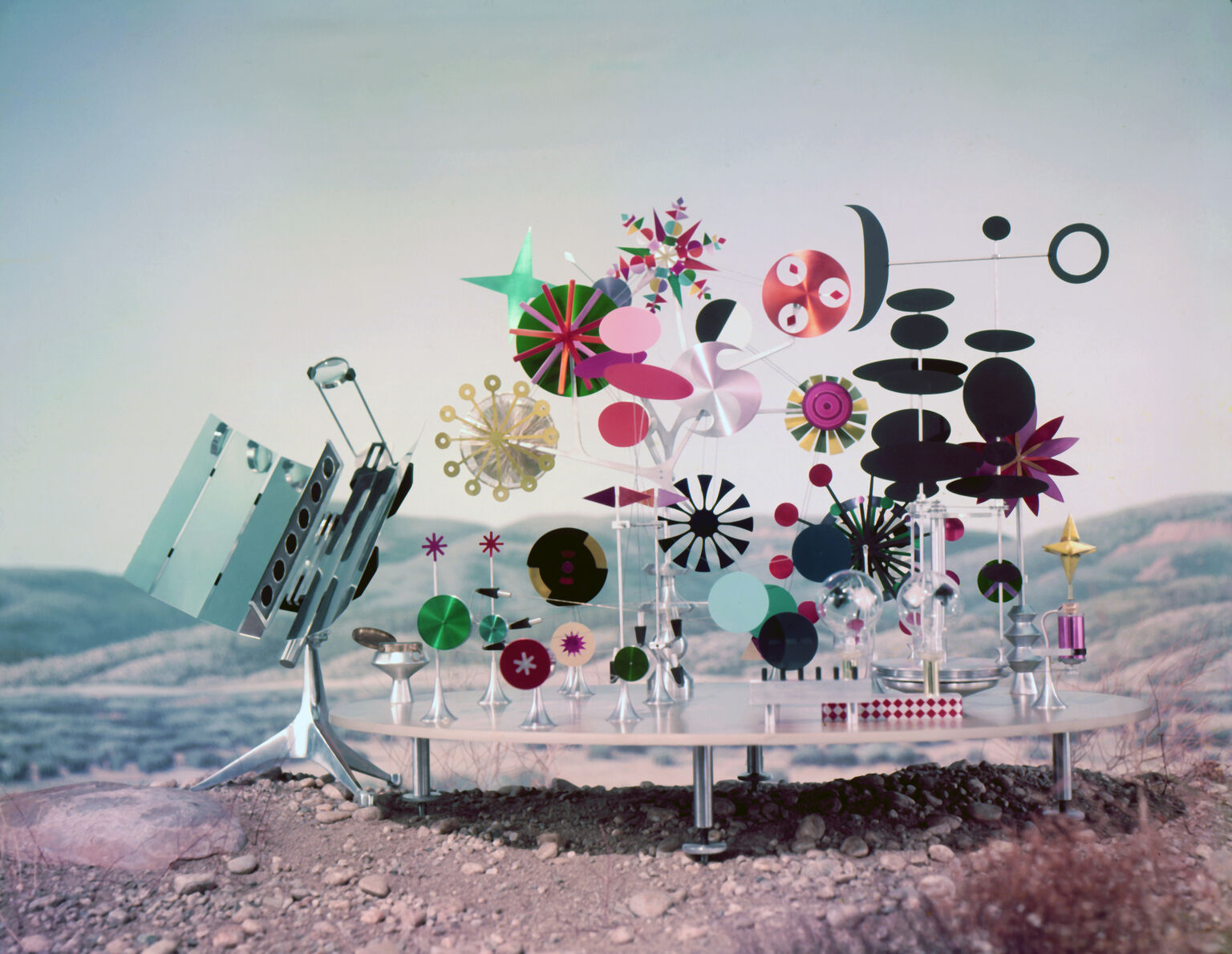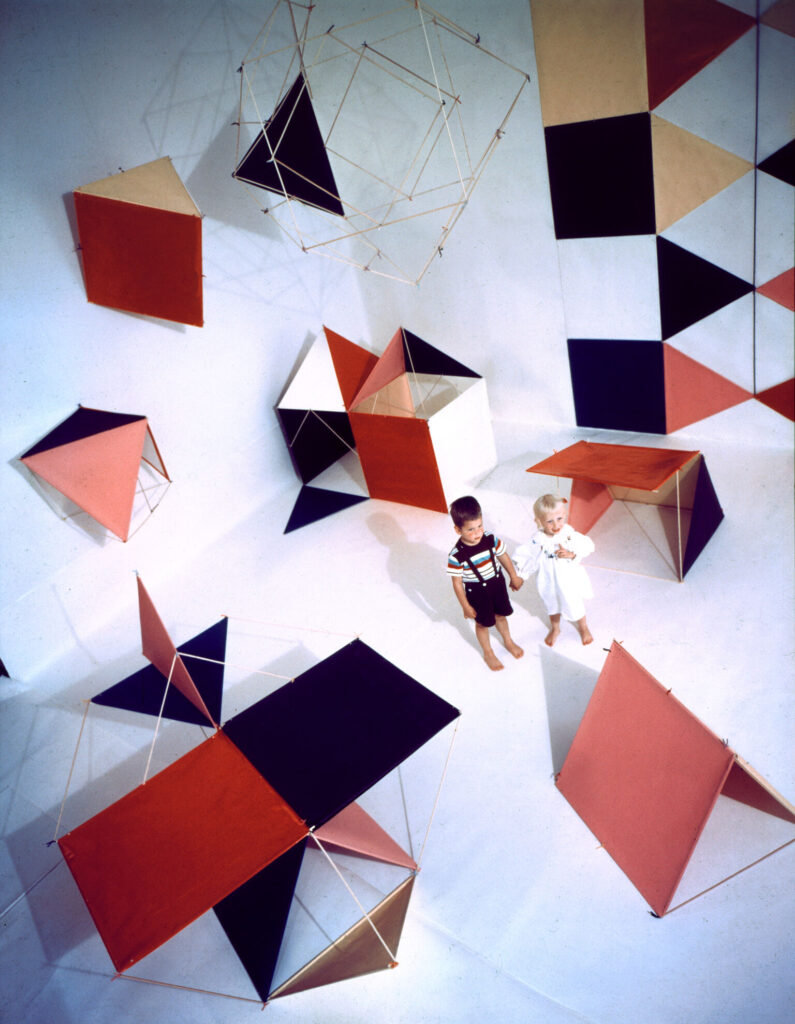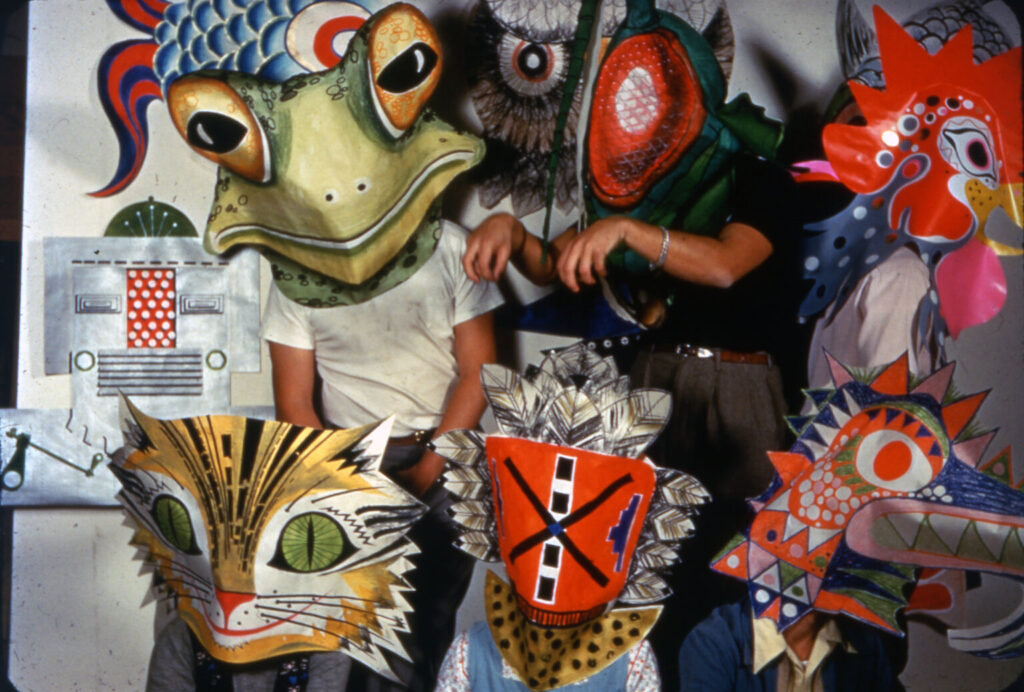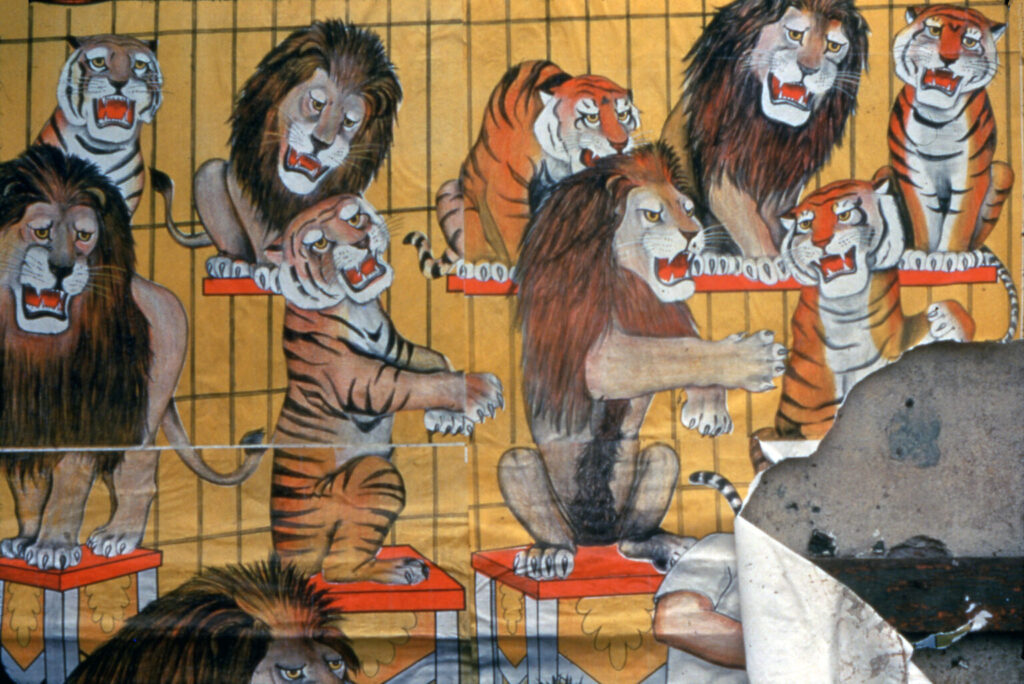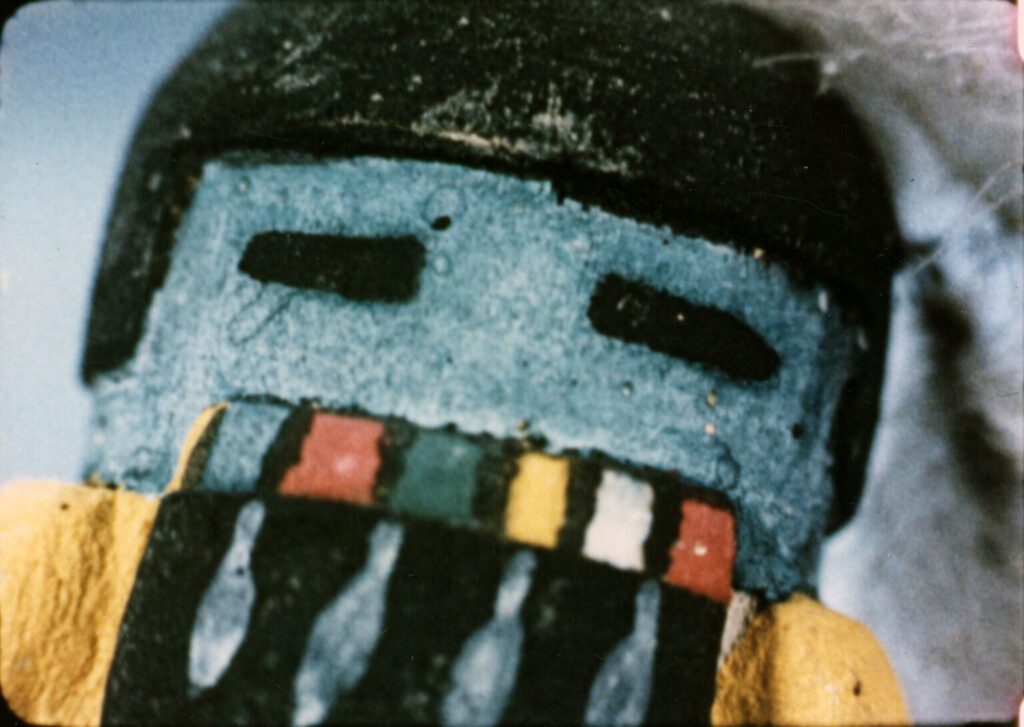The Eames Solar Do-Nothing Machine was a solar-powered toy made as a commission for the Aluminum Company of America, or Alcoa, in 1957. Its small aluminum parts were cut, turned, brushed, anodized, dyed, and lacquered entirely inside the Eames Office. It was a machine with “nothing” as its intended output. All it was meant to do was absorb the sun, and whirl and twirl its numerous parts. When looking beyond this, we can discover many connections with other Eames projects—both visually and ideologically.
Form followed function for the Eameses, which explains why their furniture pieces look so different from one another. It was important for a chair to be comfortable, stable, and long-lasting before it was made beautiful. Even still, there is a very recognizably “Eames” quality to most of their furniture (and architecture, exhibitions, films, and toys)—a visual language of sorts—that allows you to connect the dots along the output of the Eames Office. The shapes of the solar toy feel reminiscent of the Walnut Stools; the bases of a few designs for chairs and tables; graphics produced for Herman Miller; and visual elements of exhibitions like Mathematica. As with many designers, the Eameses built upon their knowledge with each passing project, sometimes borrowing color schemes, forms, materials, or production techniques from their previous designs to produce something completely new.
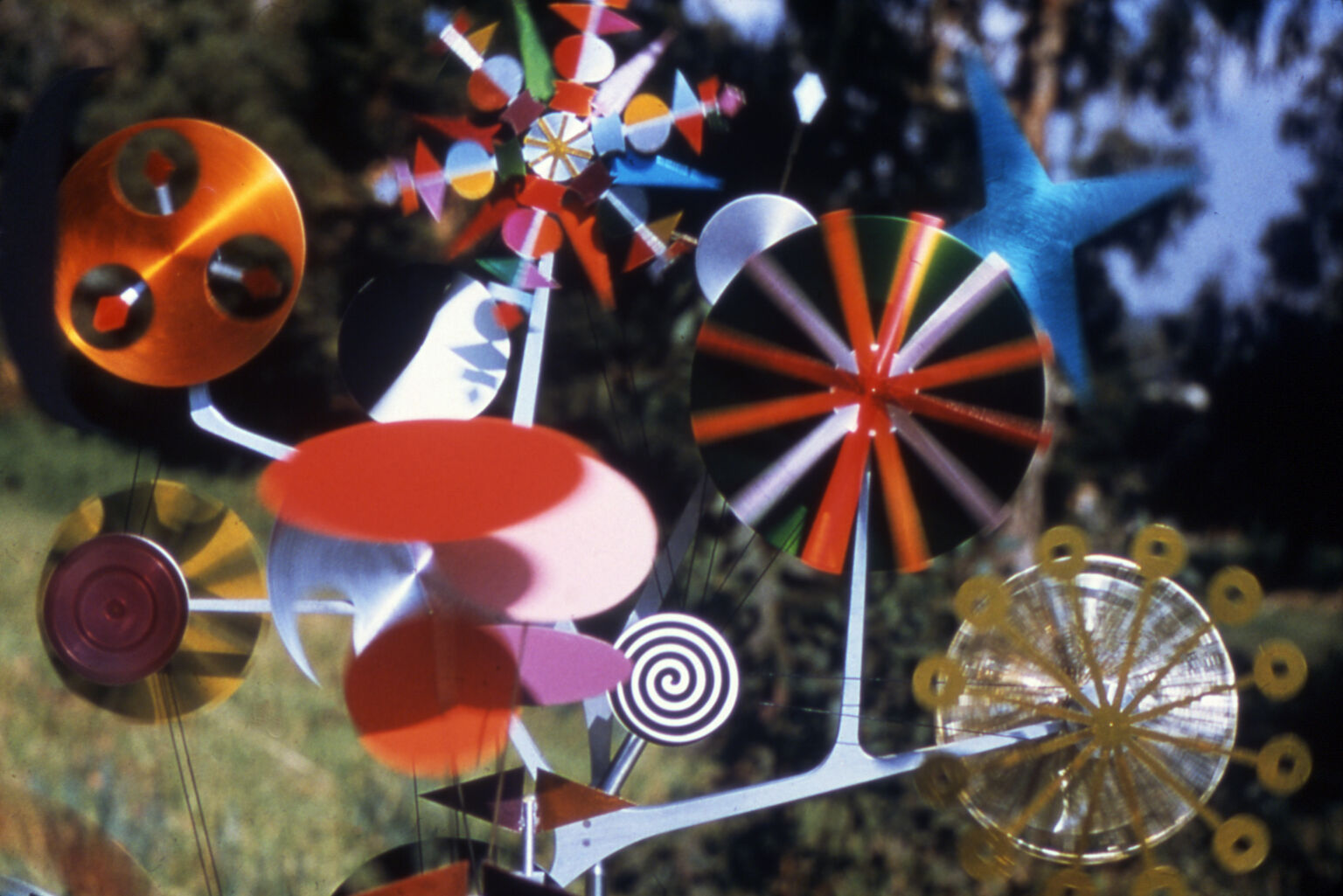
When looking even more closely at their approach to furniture design, the Eames Office’s solution to seating often focused on pieces of industrious materials (leather, Naugahyde, plywood, etc.) and their connection points: long, narrow bars of aluminum or steel. Isn’t that essentially what the Solar Do-Nothing Machine did, too? These designs were individual parts functioning as one whole, often with the help of aluminum.
Even further, this was how their multiscreen photo slideshows functioned. Many individual photographs moved together to produce an idea in a single frame, like in the Eames film, “Glimpses of the U.S.A.” The Office’s “Copernicus” slide show presentation was another connection to the idea of the sun powering our lives.
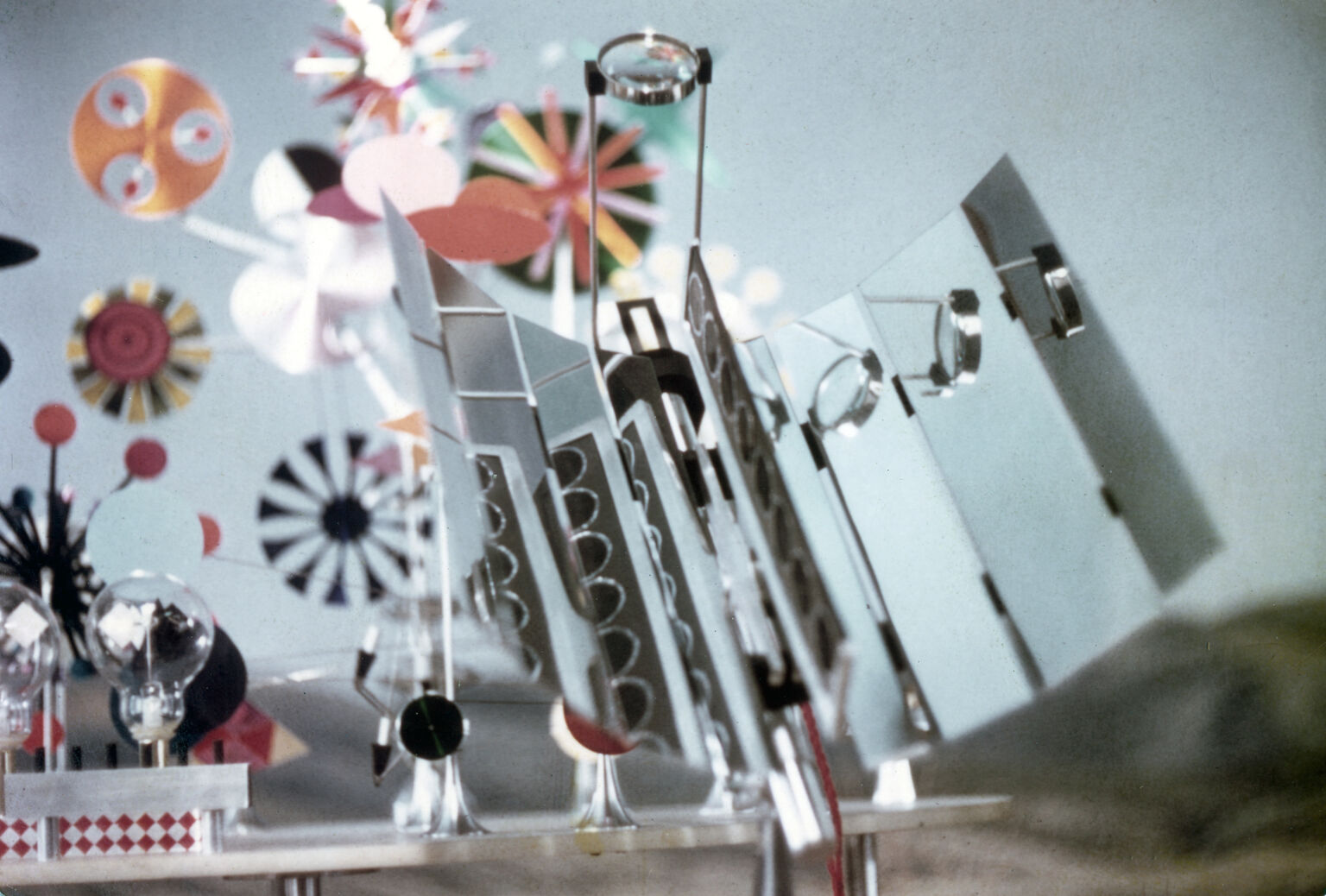
Then there was the Eameses’ sense of play! This aspect of their work is most apparent when watching the solar toy in action, but it can also be felt when seeing the machine as stationary in photographs. We see playful elements of the Solar Do-Nothing Machine in The Toy, in kites, and on the reverse sides of the Eames House of Cards. Surely there is evidence of a continuous language throughout the Office’s four decades of production.
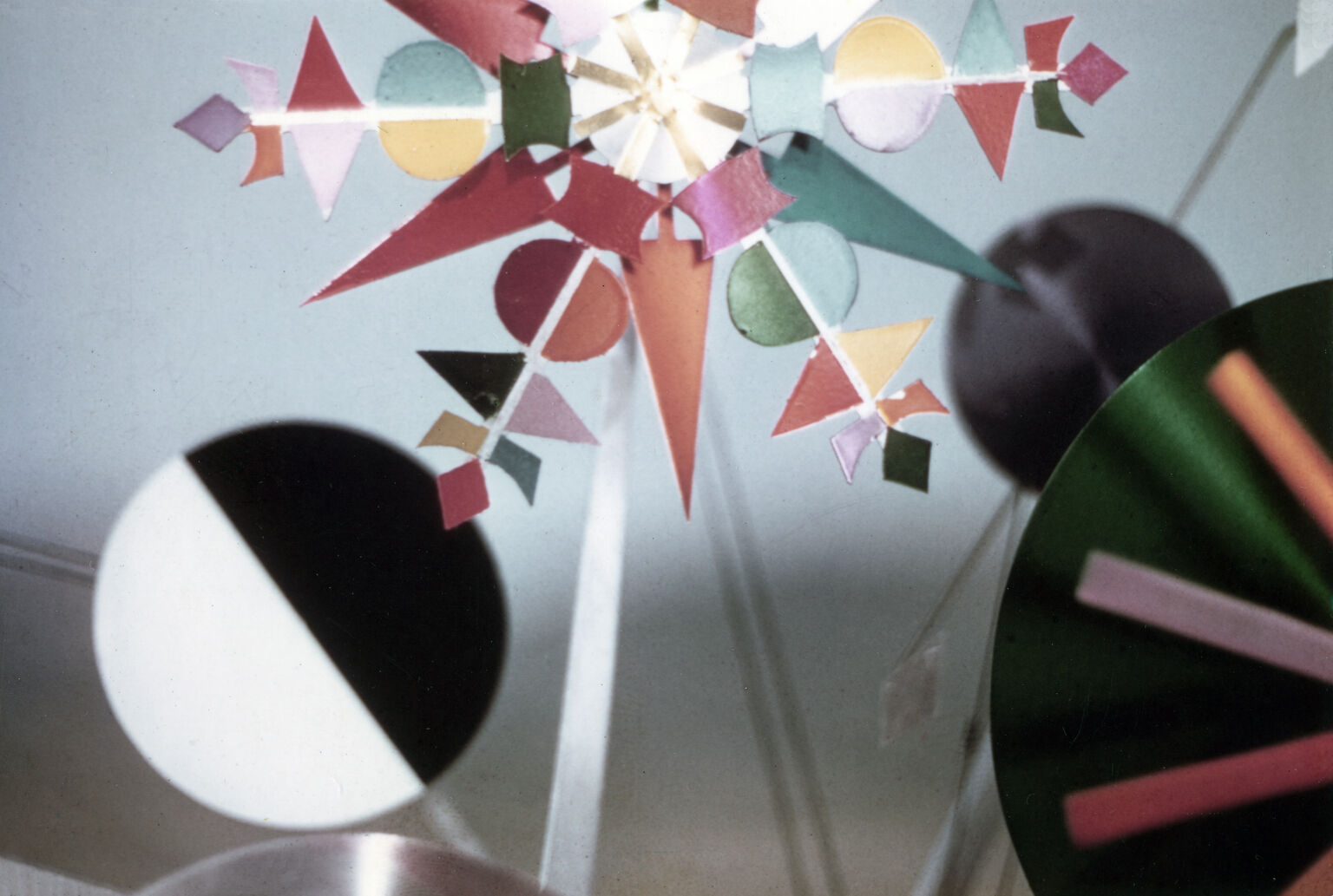
In an interview about the machine, post-design, Charles said, “We decided to make a device that will do nothing. But the answer is not as simple as that. What kind of a nothing? You can do nothing in a Baroque way. You can do it in a Gothic way. If you are not careful, you will wind up with a kind of hodge-podge nothing, a big splatter of schmaltz.” So what can we determine about the result of this Alcoa project? The Solar Do-Nothing Machine did nothing in the most Eamesian way.
Written by Kelsey Rose Williams
